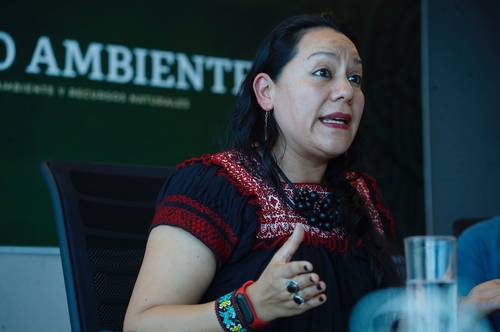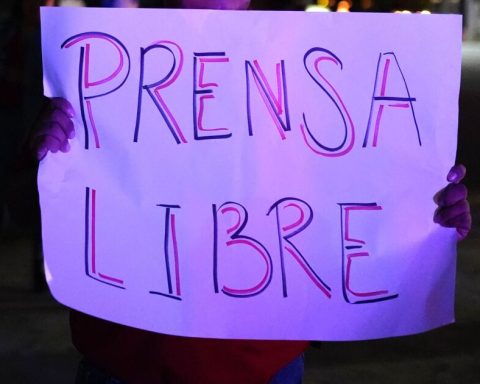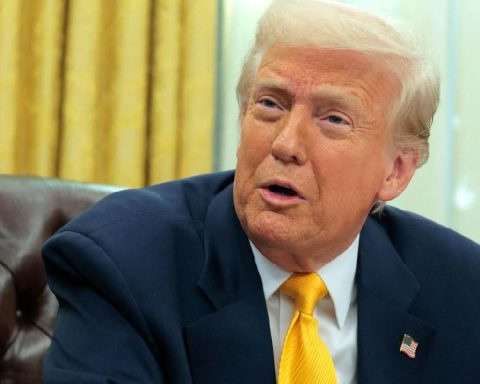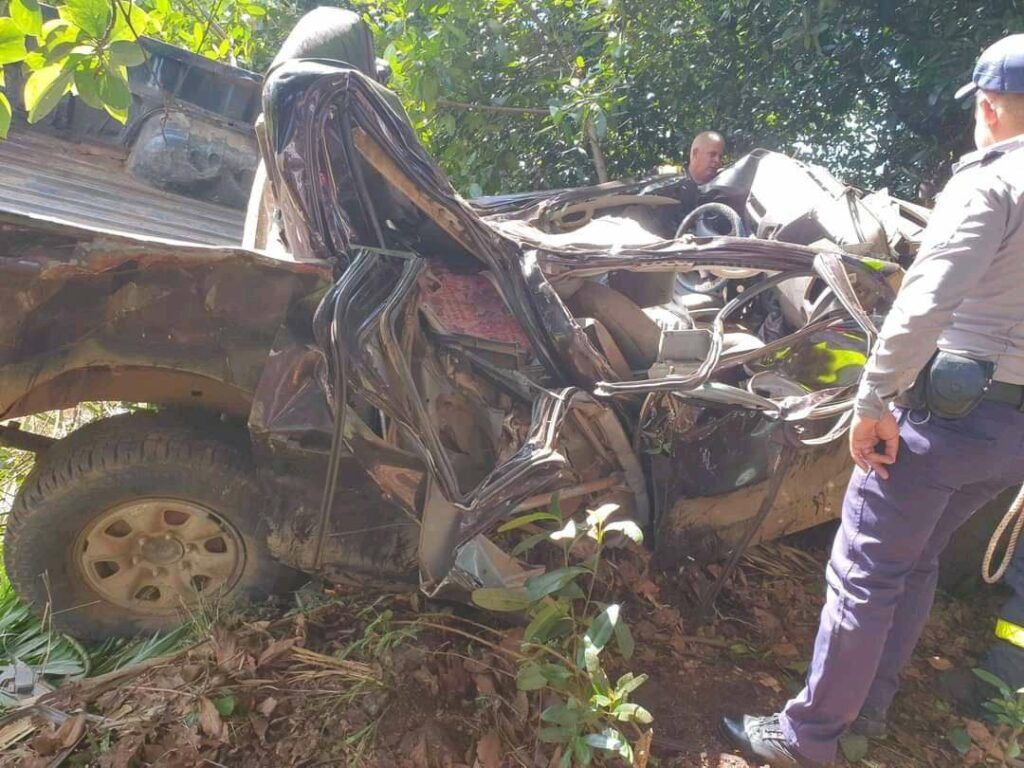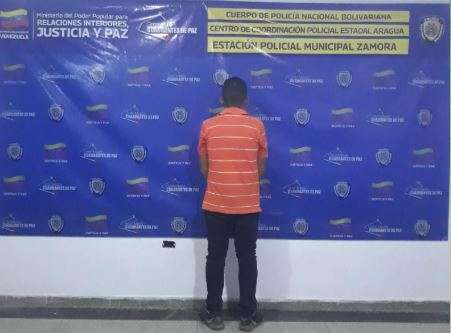▲ We have been a bit moderate in what we are committing to as a country
Regarding the emission of pollutants, says the head of the Ministry of Environment and Natural Resources, María Luisa Albores González.Photo Cristina Rodriguez
Angelica Enciso and Arturo Cano
Newspaper La Jornada
Wednesday, November 9, 2022, p. 12
If the climate summit was a party, it would be suit
because each country arrives with its cooperation: the policies that will allow it to reduce its emissions and thus bring the world closer to the goal of mitigating global warming.
Ahead of the 27th Conference of the Parties (COP27), which takes place in Egypt, the Mexican government has announced the national contribution, explained in an interview by the head of the Environment and Natural Resources Secretariat (Semarnat), María Luisa Albores, accompanied in the talk by Agustín Ávila, director of the National Institute of Ecology and Climate Change (INECC).
The commitments of each country are reflected in the Nationally Determined Contribution (NDC), and in the Mexican case a package of 43 measures is announced, eight of them higher ambition
and put on the table at the last minute, focused on the transport and industrial sectors, as well as the Sembrando Vida program, the National Blue Carbon Strategy (listed in the commitments, although it has not been published) and others in charge of the Commission National Protected Natural Areas (Conanp).
Agustín Ávila recalls that in Paris (2015), Mexico – which ranks 13th among the largest polluters on the planet – committed to lowering the generation of greenhouse gases (GHG) by 22 percent. “This is ratified in 2020. What we are doing is increasing our commitment to reduce emissions. The new actions allow us to increase the ‘ambitions’ (to reduce emissions) to 30 percent, with the stamp of what the 4T government is doing”.
Follow the official: If we did nothing, emissions by 2030 would reach 991 million tons (mdt), according to a study by the INECC. With the increase, Mexico would have, in 2030, around 680 mdt
.
The available data (from 2019) allow us to affirm that Mexico had already entered a emissions reduction plateau
result of change of the energy matrix in the country
with ingredients like clean energy without dirty contracts, energy cogeneration, use of waste
.
In the list of new actions that allow to increase the ambitions
By 2030, Semarnat includes the Mayan Train, which in the future will reduce travel by road and plane.
Only the Mayan Train was taken into account, the entire sum was missing (including the effects that the change in the mode of transport with the Transistmico, for example, will have). We have been a bit moderate in what we are committing to as a country
says secretary Albores.
The strong actions
assures the federal officials, they are in the nature-based solutions
, an item that includes the Sembrando Vida program, “which is already beginning to be measured (…). We propose that by 2030 it can have stability in its measurement and take an average in the case of agroforestry systems.”
Along the same lines, Albores refers that there was also a moderate calculation regarding protected natural areas (PNA). We are talking about 2 million hectares, although we are proposing and programming that before we leave we will leave 3 million hectares under a conservation regime
.
–In a complicated world scenario, this government has redoubled its commitment to fossil fuels, while reducing the budget for conservation. How to meet commitments with fewer resources?
–The 2023 budget (for Semarnat) is expanded by 83 percent. Most of it is directed to the National Water Commission (Conagua), because it is sought that at least work be done in 17 dams; there are nine dam projects with technological innovation.
At this point, Albores explains that the remarkable thing about Conagua’s projects is that they will be developed without conflicts with the communities
and with technological innovations.
These actions are far from the conservation action
that prevailed for a long time, in which it was about “taking care of a butterfly, a bee…” while people were forgotten.
It is not by chance, he affirms, that the ANP are precisely the areas where, according to Coneval data, the highest rates of marginalization and poverty are recorded.
Conservation without spending more
–230,000 hectares are lost each year due to deforestation. And there are studies that indicate that the resources allocated to the ANP are barely 10 pesos per hectare. Is mitigation possible?
-In the ANP we are doing a very serious job. In Conanp I found colleagues with a lot of mystique, with vocation and dedication, in the territory, but we also saw that no progress had been made in central offices.
He believes that some of the problems can be solved without the need for more resources and have been solved with inter-agency coordination. In all the places where there are ANP, we go together with Sembrando Vida
.
– How to deal with insecurity problems? There are people who are afraid to go and do conservation work.
-Illegal logging became normal in the country, more than 40 years passed. They put the cocaine in a suitcase, they hide it, but a trunk? Young people participated or continue to do so, it’s not that easy, but we don’t leave it aside. We work on it with the seriousness that it implies, through the Security Secretariat, at the peace tables, and we have made significant progress.
When there is illegal traffic it is because there are countries that consume. We have the data of the countries that consume the most tropical woods; there is an organized crime network.
Despite the existence of a reforestation program as beautiful as Sembrando Vida, which is for a million hectares
and forget that this is a country of 200 million hectares
it cannot be assumed that nothing happens
he points out. It is an issue that is worked on and several budgets are put in
that is, various federal agencies and state governments participate in the fight against illegal logging.
–Sembrando Vida was sectorized in Welfare. Along the way did it also become an environmental program?
-He carried both things from the beginning, it was with a clear sense, social regeneration, but also everything that was going to contribute in environmental terms.
-What do you think of the slogan of the National Agricultural Council that without pesticides there is no country
?
–Glyphosate is not allowed in many countries. Now that a pesticide law is being promoted (via changes to the General Health Law), we are talking about some that are highly toxic, prohibited in more than 36 countries, that toxic industry continues to pull us down and affect the day laborers who are the ones who apply those substances.
–Can climate summits really give results?
-If something specific is carried as a country, it can be very effective. On this occasion, Mexico has something very concrete: an agreement to be signed with the United States (the agreement was announced by John Kerry, the US envoy for the issue).
Albores recalls that COP26 established a reforestation fund, to which a dollar has not entered
. Mexico it was more serious when we started the Sembrando Vida program in El Salvador and Honduras
.
